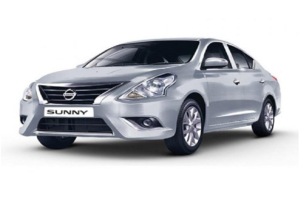
How Car Age Affects Your Insurance Premium
When considering the cost of your car insurance premium, one key factor that often comes into play is the age of your vehicle. Insurance companies assess multiple variables when calculating your premium, and the age of your car plays a significant role in determining how much you pay. Let’s explore how the age of your vehicle can impact your insurance costs and why this factor matters to insurers.
Why Does Car Age Matter for Insurance Premiums?
Car age is a crucial element because it can affect the likelihood of claims and the cost of repairs or replacements. Insurance companies use data and statistics to assess risk, and over time, certain trends emerge related to car age. These trends help insurers predict potential costs, which then influence your premium.
New Cars Tend to Have Higher Premiums
Surprisingly, new cars often have higher insurance premiums than older ones. This is primarily because the cost of replacing or repairing a new car is significantly higher than that of an older model. If you were to total a brand-new vehicle, the insurer would need to cover a large pay-out, which increases their risk.
New cars are also more likely to have advanced features like parking sensors, backup cameras, and automatic emergency braking. While these technologies are great for safety, they are expensive to repair or replace, which can drive up the cost of your premium.
Older Cars May Lead to Lower Premiums (But Not Always)
As cars age, their value tends to depreciate, which often leads to lower insurance premiums. In the event of an accident, the cost to repair or replace an older car is generally less than that of a new vehicle, making them less expensive to insure. However, this reduction in cost doesn’t always apply across the board.
Older cars may lack modern safety features, making them more likely to be involved in accidents or suffer greater damage in a collision. Additionally, if you drive a rare or classic car, the cost to repair it may actually be higher than that of a newer model, resulting in higher premiums.
Mid-Life Cars: The Sweet Spot for Insurance Premiums?
A car that is around 3 to 5 years old is often considered the “sweet spot” for insurance premiums. At this age, the vehicle has typically depreciated enough in value that the cost of replacement is lower, but it’s still new enough to have modern safety features that could reduce the likelihood of accidents.
This combination of lower risk and lower repair costs can result in lower premiums for mid-life cars. For many drivers, this is when they may see the best balance of affordability and coverage.
Other Factors to Consider Alongside Car Age
While car age is a significant factor, it’s not the only one that determines your insurance premium. Insurers also consider:
- Driver’s age and experience: Younger, less experienced drivers tend to pay more for insurance, regardless of the age of their vehicle.
- Location: Where you live can impact your premium, especially if your area has high crime rates or accident statistics.
- Car’s safety rating: Vehicles with higher safety ratings can lead to lower premiums since they pose a lower risk to the insurer.
- Frequency of use: How often you drive and the distance you cover can also influence your premium. High-mileage drivers may pay more.
Does Car Age Impact All Types of Insurance?
Not all insurance coverage is equally impacted by the age of your vehicle. While the car’s age is important for comprehensive and collision coverage, it may have less of an effect on liability coverage. Here’s a breakdown:
- Comprehensive and Collision Coverage: These types of coverage are directly tied to the value of your car, and as the vehicle depreciates, the coverage cost often decreases.
- Liability Coverage: Since liability insurance covers the damage you cause to other people or property, the age of your car plays a smaller role. Your driving record, location, and other personal factors have more influence on this part of your premium.
How to Lower Your Insurance Premium Regardless of Car Age
While you may not be able to control the age of your car, there are ways to reduce your insurance premium. Here are a few tips:
- Increase your deductible: A higher deductible can lower your premium, though you’ll need to be prepared to pay more out of pocket in the event of an accident.
- Bundle your insurance policies: Many insurers offer discounts if you combine multiple policies, such as home and auto insurance.
- Shop around for quotes: Different insurers weigh factors like car age differently. Getting a car insurance quote from multiple providers can help you find the best deal.
Conclusion
The age of your car has a direct impact on your insurance premium, with new cars generally costing more to insure and older cars often resulting in lower premiums. However, the relationship between car age and insurance costs isn’t always straightforward, as other factors like the car’s safety features, your driving habits, and your location also play a role.
By understanding how car age influences your insurance premium, you can make more informed decisions about your coverage and find the best deal for your situation. Whether you’re driving a brand-new model or an older vehicle, it’s always worth shopping around and comparing options to ensure you’re getting the most competitive rates.


